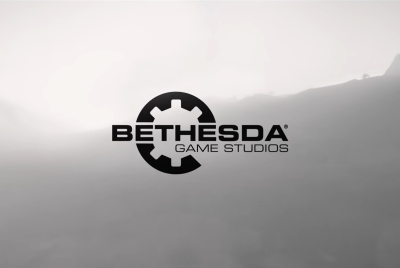Nintendo's Project Giant Robot and Project Guard - Hands-On Preview

At E3 earlier this month Nintendo made clear that they weren't going to give up on the Wii U and its motion control touch pad controller. In supporting this message they even went against type, showing off two games in the very early stages of development.
It is rare for Nintendo to show off games at such an early stage, but they still did so with pride - sending out legendary game designer and Mario creator Shigeru Miyamoto to talk them up at the Los Angeles trade show.
These two games were Project Guard and Project Giant Robot, and I got hands-on time with both at Nintendo's post-E3 showcase in London. Here's what I thought...
Project Giant Robot
Of the two, Giant Robot was easily the furthest from completion, barely holding together in even this stripped down, basic form. The game is reminiscent of classic robot boxing game Rock 'em Sock 'em Robots, only with customisable robot designs and a destructible city arena.
Initially you're tasked with assembling your robot from a wide variety of parts that can be placed in set positions representing the head, arms, legs, torso and so on. Each part's length, width and depth can be tinkered with a basic sliding scale, making the weighting of your robot important.
For example if your robot is top-heavy it is more likely to fall over, but will also be stronger when it comes to your goal of knocking over enemy robots.
The practice stage pitted my robot design (a series of enormous screws with the Russian Doll's head on top) against a stack of immobile boxes. Players can see the world through their robot's eyes on the Gamepad's screen. Moving the gamepad around will determine where the robot looks, with its position changing to match.
Moving forward or backwards requires holding down either shoulder button, each arm is moved with the sticks and there is also a laser you can fire – which proved useful in the final stage against a series of four-legged robots whose legs I shot out from underneath them.
Stages two and three pitted my bot against other huge humanoid androids - Pacific Rim it was not. The movement was incredibly slow and the weighting of my bot wasn't quite on the money. There were numerous occasions when I should have fallen but miraculously stayed upright.
Tripping each enemy bot did feel fun – giving me some reason for optimism – but it felt like a victory over the control scheme just as much as a victory over Power Rangers mega-zord reject #43.
For this premise to work the whole game needs to be a little quicker and feel a lot more responsive. Before long with the game the motion control became the obtuse, clunky control mechanism the Wii's controller was before the release of Motion Plus.
There remains potential, but a lot of work is needed for this premise to have legs. Perhaps removing the first person Gamepad aspect would allow Nintendo's designers to refocus on the third person, main screen part of the game. At the moment I can't see how having both will work.

Project Guard
Compared to Giant Robot, Project Guard was a much more accomplished title with potential to become pretty fun multiplayer party game.
Reminiscent of tower defence games, players are presented with a maze-like base and a series of 12 security cameras covering every angle of it. A variety of enemies big and small then descend on the base in an effort to reach the centre and destroy it.
To combat this you need to track each camera, spot when one picks up an enemy and then take over to blast it away. It starts simply enough but as you'd expect the enemies eventually arrive thick and fast, dividing the player's attention between spotting, shooting and prioritising where the biggest threat is coming from.
Preferably this would be played with a group of friends who could point out when an enemy is spotted or just yell and incoherent string of numbers to throw you off – depends on the friends really.
If Guard is to be a successful release then it is in desperate need of a visual makeover, however.
What I saw works for this demo, but is this is even close to final it is far from what we expect from Nintendo. A handful of enemy designs and incidental animations were cute, but whatever the final game ends up being will need a much more alluring look to support what is a fun concept.
© Copyright IBTimes 2025. All rights reserved.




















